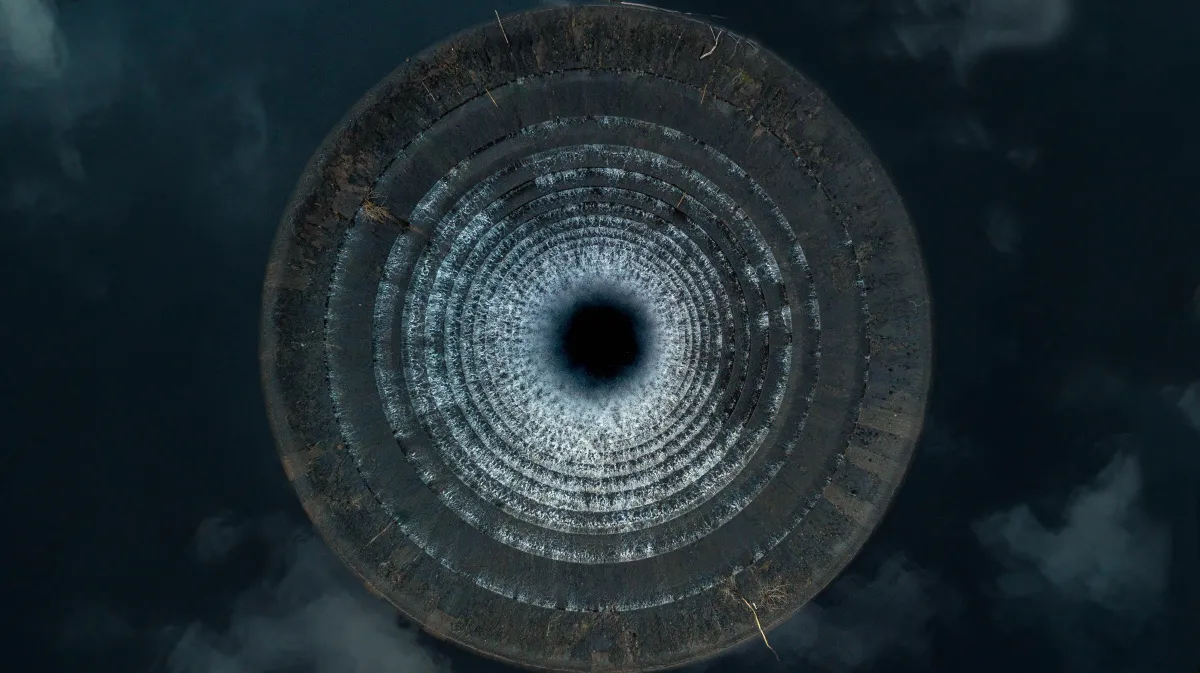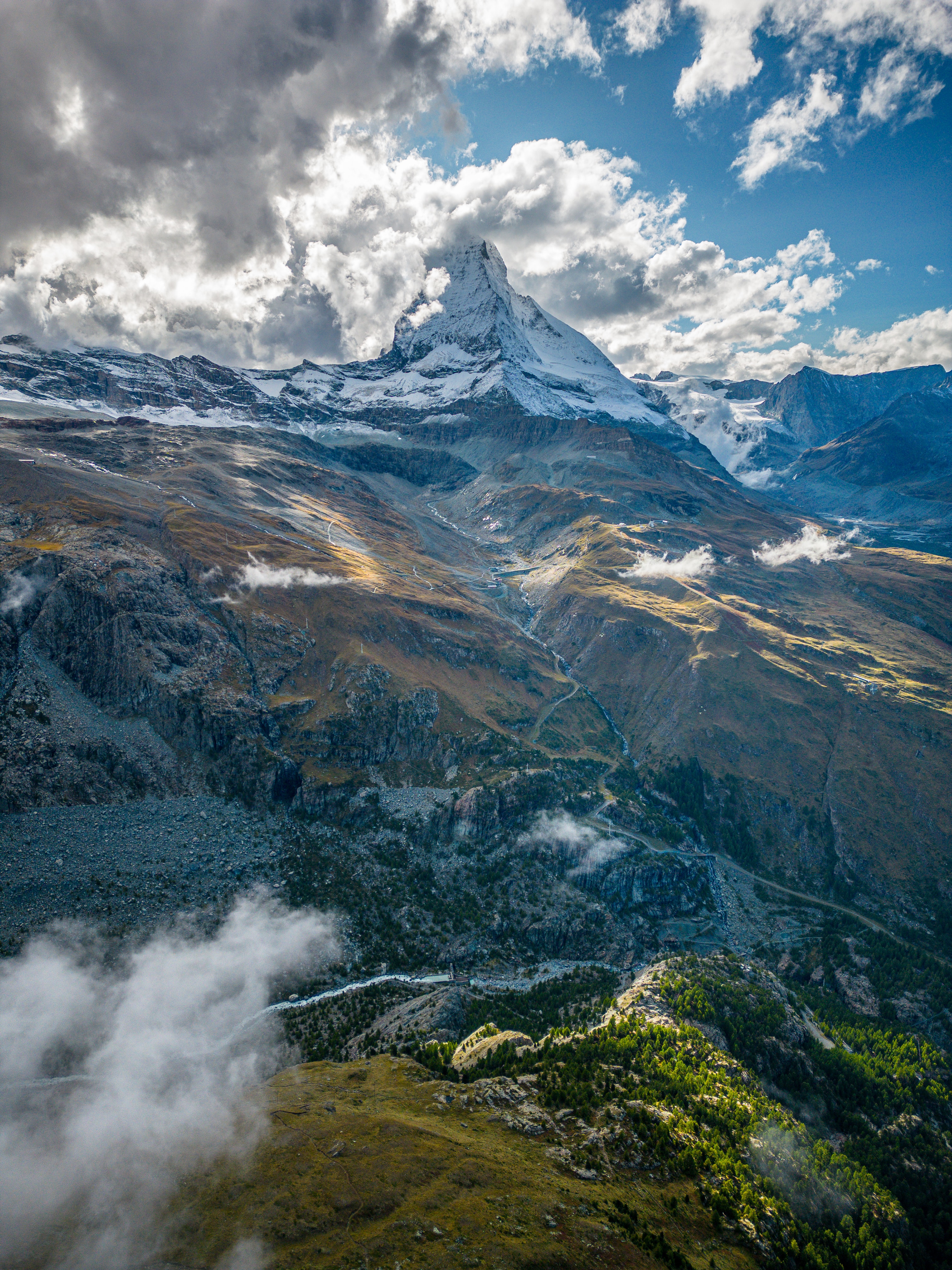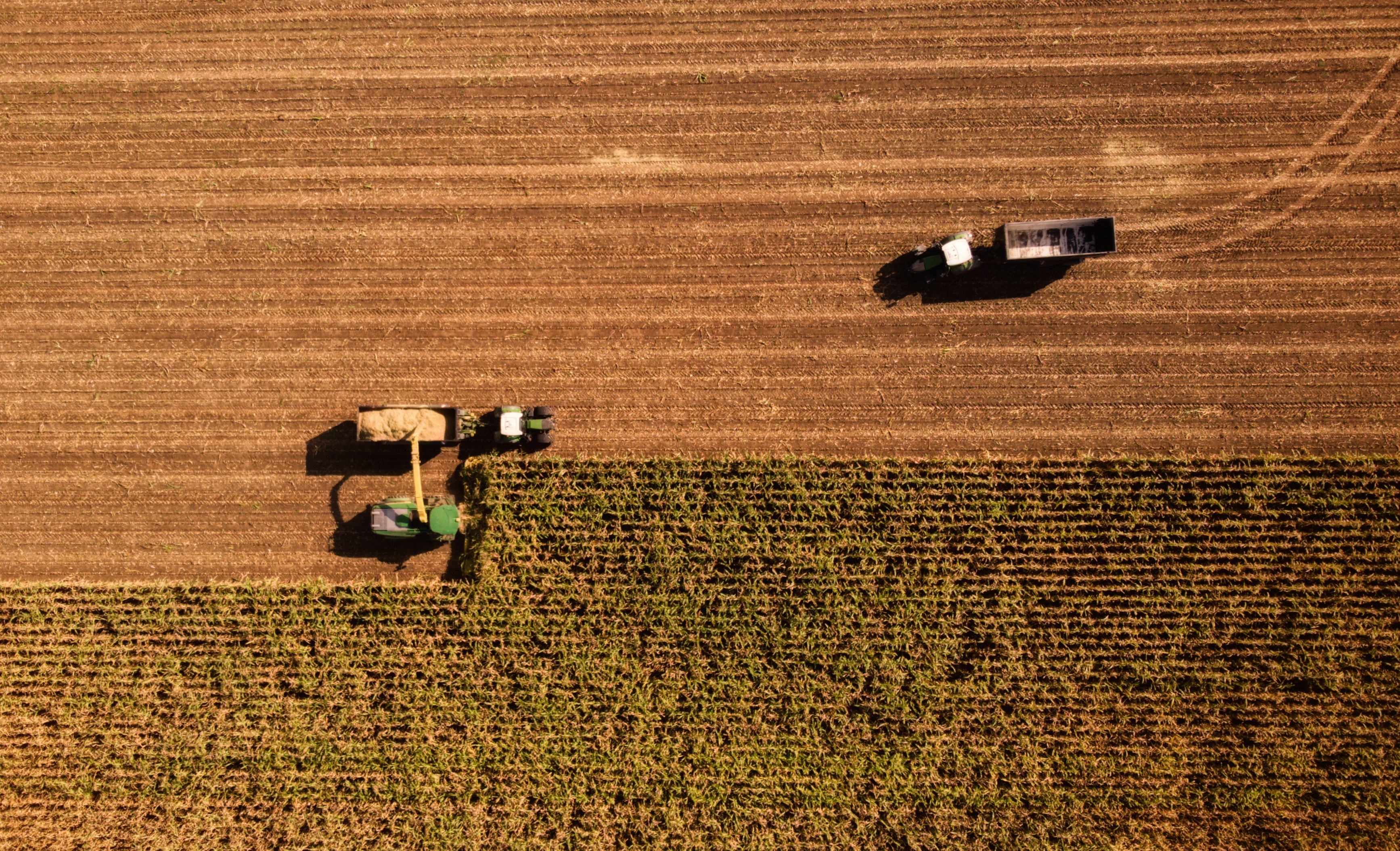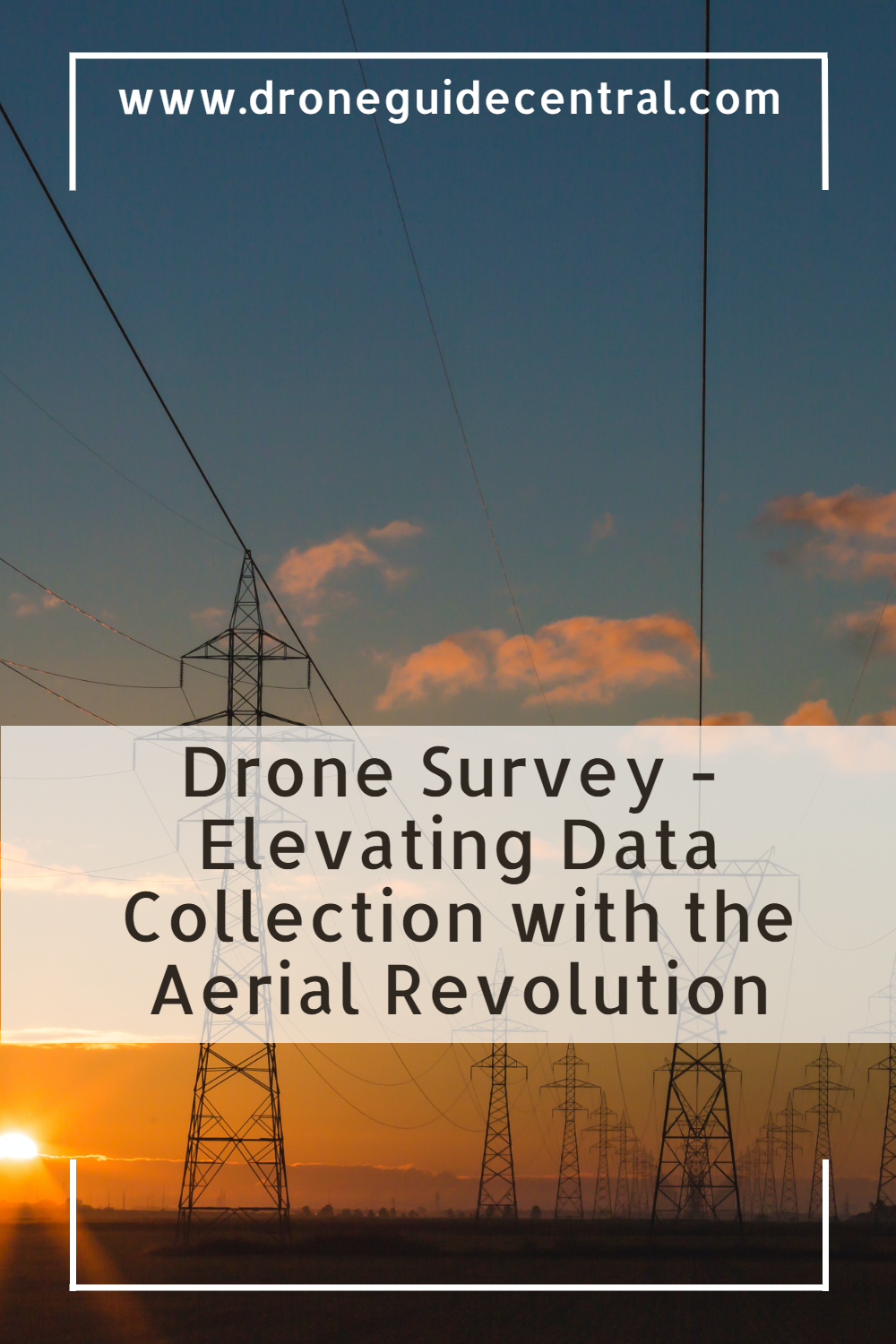
Drone Survey - Elevating Data Collection with the Aerial Revolution
In this article, I'll take you on an exploration of the various types of drone surveys and provide valuable insights into when and why each type is best suited for different applications. As a drone enthusiast, I understand the importance of choosing the right survey method to get the most accurate and efficient results. So, let's dive into the world of drone surveys and discover the perfect match for your needs.
Introduction to Drone Survey
Before we delve into the different types of drone surveys, let's briefly understand what drone surveys are and why they are gaining popularity.
What is a Drone Survey?
Drone surveys involve the use of unmanned aerial vehicles (UAVs), commonly known as drones, to collect data, images, or videos from the air. These surveys have revolutionized industries such as agriculture, construction, and environmental monitoring by providing cost-effective and efficient data collection methods.
Why Use Drones for Surveys?
Drones offer several advantages, including cost savings, accessibility to hard-to-reach areas, and the ability to capture high-resolution data. They are also environmentally friendly, reducing the need for ground-based vehicles and personnel.
Types of Drone Surveys
Now, let's explore the various types of drone surveys and when they are most beneficial.
Aerial Photography and Videography Drone Survey
Aerial photography and videography involve capturing stunning images and videos from the sky.

Applications:
Real Estate Marketing: Drones provide breathtaking aerial views of properties, enhancing property listings and attracting potential buyers.
Tourism Promotion: Tourism boards use drone footage to showcase scenic destinations, inviting travelers to explore picturesque landscapes.
Landscape Analysis: Environmentalists and urban planners use aerial imagery to assess changes in land use, track deforestation, and plan conservation efforts.
Film and Entertainment: Drones are widely used in the film and entertainment industry to capture breathtaking aerial shots for movies, TV shows, and commercials.
Event Coverage: They provide dynamic angles for event photographers, capturing weddings, sports events, and festivals from unique perspectives.
Environmental Documentation: Aerial photos and videos help document changes in natural landscapes over time, aiding in environmental research and education.
Topographic Surveys
Topographic surveys focus on creating detailed maps of the Earth's surface, including elevation data.
Applications:
Construction Site Planning: Engineers and construction teams use topographic surveys to design site layouts, ensuring proper drainage and foundation stability.
Land Development: Urban planners rely on topographic data to make informed decisions about zoning and land development.
Flood Modeling: Hydrologists use elevation data to predict and mitigate flood risks, enhancing disaster preparedness.
Environmental Impact Assessment: Environmental consultants use topographic surveys to assess the potential impact of construction projects on local ecosystems.
Urban Planning: City planners rely on accurate topographic data to design efficient transportation networks and infrastructure.
Mining Operations: Mining companies use topographic surveys to plan and optimize extraction processes, ensuring minimal environmental disruption.
Thermal Imaging Surveys
Thermal imaging surveys use infrared cameras to detect temperature variations, revealing hidden issues.
Applications:
Detecting Heat Leaks in Buildings: Energy auditors use thermal imaging to identify areas of heat loss in residential and commercial buildings, improving energy efficiency.
Locating Wildlife: Conservationists and biologists use thermal imaging to track nocturnal wildlife, study behavior, and protect endangered species.
Search and Rescue Operations: Drones equipped with thermal cameras can locate missing persons in low-visibility conditions, such as dense forests or during nightfall.
Building Inspections: Contractors and building inspectors use thermal imaging to identify water leaks, electrical issues, and insulation problems within structures.
Industrial Maintenance: In manufacturing plants, drones equipped with thermal cameras detect overheating equipment, preventing costly breakdowns.
Firefighting: During wildfires, thermal drones help firefighters identify hot spots and assess the extent of the fire, improving firefighting strategies.
LiDAR Surveys
Light Detection and Ranging (LiDAR) surveys use lasers to measure distances, creating precise 3D models.
Applications:
Forest Inventory: Forestry experts use LiDAR to estimate tree density, canopy height, and biomass, aiding in sustainable forest management.
Archaeological Mapping: LiDAR reveals hidden archaeological features, such as ancient ruins or burial mounds, beneath dense vegetation.
Power Line Inspections: Utility companies employ LiDAR-equipped drones to inspect power lines, identify vegetation encroachments, and prevent outages.
Floodplain Mapping: LiDAR surveys aid in mapping floodplains, predicting flood patterns, and improving flood risk management.
Transportation Planning: Transportation engineers use LiDAR data to design roadways and railways, ensuring safe and efficient transportation systems.
Forestry Management: LiDAR helps forest managers assess forest health, monitor tree growth, and plan sustainable logging operations.
Crop Monitoring Drone Survey
Crop monitoring involves using drones to assess crop health, growth, and potential issues.

Applications:
Precision Agriculture: Farmers use crop monitoring to optimize irrigation, fertilizer application, and pest control, ultimately increasing crop yields.
Yield Prediction: By analyzing crop health over time, farmers can make informed predictions about harvest quantities and plan logistics accordingly.
Pest Control: Drones equipped with sensors can identify early signs of pest infestations, allowing for targeted intervention
Disease Detection: Drones equipped with multispectral cameras can identify plant diseases early, allowing farmers to take prompt action.
Irrigation Management: Crop monitoring helps farmers optimize irrigation schedules, conserving water resources and reducing costs.
Insurance Assessment: After natural disasters, drones assess crop damage, assisting insurance companies in claims processing.
Environmental Surveys
Environmental surveys assess the impact of human activities on natural ecosystems.
Applications:
Monitoring Deforestation: Environmental agencies use drones to monitor illegal logging and deforestation, aiding in conservation efforts.
Tracking Wildlife Populations: Drones help biologists count and track wildlife populations, leading to more effective conservation strategies.
Studying Climate Change: Aerial data collection enables scientists to study changes in glaciers, sea ice, and coastal erosion, contributing to climate research.
Pollution Monitoring: Drones collect air and water samples for pollution analysis, helping authorities identify and mitigate environmental hazards.
Habitat Restoration: Conservationists use aerial data to plan habitat restoration projects, revitalizing ecosystems and supporting biodiversity.
Wildlife Research: Aerial surveys contribute to wildlife population studies, migration pattern tracking, and the protection of critical habitats.
Mining and Quarrying Surveys
Drones are used to collect data on mining and quarrying operations, ensuring safety and efficiency.
Applications:
Volumetric Measurements: Drones calculate the volume of stockpiles, helping mining companies manage their resources effectively.
Stockpile Analysis: Regular surveys ensure accurate inventory management and prevent overstocking or shortages.
Mine Planning: Detailed aerial maps assist in mine planning, including identifying high-potential areas and evaluating safety hazards.
Safety Inspections: Drones conduct safety inspections in hazardous mining environments, reducing the risk to human inspectors.
Environmental Compliance: Mining companies use drone data to ensure compliance with environmental regulations, minimizing ecological impact.
Tailings Pond Monitoring: Drones monitor tailings ponds for leaks and structural issues, preventing environmental disasters.
Infrastructure Inspections Drone Survey
Drones inspect critical infrastructure like bridges, dams, and power lines for signs of wear and tear.
Applications:
Preventative Maintenance: Regular drone inspections identify structural issues early, reducing maintenance costs and the risk of catastrophic failures.
Identifying Structural Issues: Engineers can analyze high-resolution images and thermal data to detect cracks, corrosion, and other structural problems.
Reducing Downtime: Drone inspections minimize downtime for infrastructure repairs, improving overall system reliability.
Pipeline Inspections: Drones inspect long-distance pipelines, detecting leaks, corrosion, and encroachments, ensuring the integrity of the pipeline network.
Bridge Assessments: Engineers use drones to inspect bridge structures, identifying structural weaknesses and the need for repairs.
Historical Preservation: Drones capture detailed images of historical buildings and structures, aiding in restoration and preservation efforts.
Disaster Response Drone Survey
Drones play a crucial role in disaster response by providing real-time aerial imagery of affected areas.

Applications:
Assessing Damage: Emergency responders use drones to quickly assess the extent of damage after natural disasters such as hurricanes, earthquakes, or wildfires.
Locating Survivors: Thermal imaging-equipped drones aid in locating survivors in disaster-stricken areas, expediting rescue efforts.
Planning Rescue Operations: Aerial data guides the deployment of resources and helps prioritize rescue missions.
Wildfire Management: Drones equipped with thermal cameras assist in monitoring wildfires, tracking fire movement, and assessing damage.
Earthquake Damage Assessment: After earthquakes, drones rapidly survey affected areas, helping authorities prioritize rescue and relief efforts.
Hurricane Tracking: Drones collect data about hurricanes, improving weather forecasting and early warning systems.
Archaeological Surveys
Archaeological surveys use drones to map historical sites and uncover buried artifacts.
Applications:
Preservation Efforts: Aerial surveys assist archaeologists in preserving historical sites by documenting their current state.
Research: Aerial data aids in understanding ancient civilizations, migration patterns, and cultural exchanges.
Cultural Heritage Documentation: Drones create detailed 3D models of archaeological sites, contributing to cultural heritage preservation.
Cultural Resource Management: Archaeologists use drones to document cultural sites, ensuring their protection during development projects.
Underwater Archaeology: Aerial drones locate and document underwater shipwrecks, submerged cities, and ancient ports.
Heritage Tourism: Drone-captured images and videos promote heritage tourism, attracting visitors to historical sites.
Wildlife Conservation
Drones aid in wildlife conservation by tracking animal populations and monitoring poaching activities.
Applications:
Protecting Endangered Species: Drones provide a non-intrusive means of monitoring rare and endangered species, helping conservationists protect them from threats.
Habitat Preservation: Aerial surveys help identify and protect critical habitats, ensuring the survival of various ecosystems.
Research: Scientists study animal behavior, migration patterns, and population dynamics with the help of drone-collected data.
Illegal Poaching Prevention: Drones aid in the surveillance of protected areas, deterring poachers and protecting endangered species.
Bird Nest Monitoring: Ornithologists use drones to monitor bird nests in hard-to-reach locations, contributing to avian conservation.
Coral Reef Health Assessment: Aerial and underwater drones help marine biologists assess coral reef health and track the impact of climate change.
Security and Surveillance Drone Survey
Drones enhance security by providing real-time surveillance and monitoring in various environments.
Applications:
Border Control: Drones assist border patrol agencies in monitoring vast and remote border regions, improving security.
Event Security: Drones offer aerial views and situational awareness during large events, enhancing security measures.
Industrial Site Protection: Companies use drones to monitor industrial facilities, ensuring the safety and security of critical infrastructure.
Search and Rescue: Drones assist search and rescue teams in locating missing persons, particularly in rugged or remote terrain.
Perimeter Security: Industrial facilities and military installations use drones for perimeter surveillance, enhancing security measures.
Disaster Preparedness: Drones provide real-time situational awareness during natural disasters, supporting disaster response teams.
Forensic Investigations
Forensic experts use drones to gather evidence and reconstruct crime scenes from a unique perspective.
Applications:
Criminal Investigations: Drones capture aerial images and videos of crime scenes, aiding in evidence collection and case resolution.
Accident Reconstruction: Traffic investigators use drone data to reconstruct accident scenes, determine causes, and establish fault.
Evidence Collection: Drones provide access to hard-to-reach or hazardous areas, facilitating the collection of crucial evidence.
Traffic Management: Law enforcement agencies use drones to monitor traffic flow, identify congestion points, and optimize roadways.
Environmental Law Enforcement: Drones aid in monitoring environmental violations, such as illegal dumping or pollution discharges.
Accident Analysis: Drone-collected data helps reconstruct traffic accidents and aviation incidents, improving safety measures.
Marine Surveys
Drones are increasingly used for underwater surveys, assessing marine life and shipwrecks.

Applications:
Marine Biology Research: Marine biologists use drones to study marine life, behavior, and ecosystem health in a non-invasive way.
Coastal Monitoring: Drones help monitor coastal erosion, sea level changes, and the impact of climate change on coastal regions.
Underwater Archaeology: Underwater drones explore shipwrecks and submerged historical sites, preserving maritime history.
Marine Resource Management: Fisheries use underwater drones to assess fish populations, preventing overfishing and supporting sustainable practices.
Underwater Exploration: Research institutions employ underwater drones to explore deep-sea ecosystems and geological formations.
Ship Inspections: Ports and shipping companies use drones to inspect the hulls and structures of vessels, ensuring seaworthiness.
Delivery and Logistics
Drones are evolving to play a role in the delivery of goods, especially in remote or inaccessible areas.
Applications:
Quick Deliveries: Drones can rapidly transport medical supplies, small packages, and essentials to remote or disaster-stricken areas.
Medical Supply Transportation: In emergency situations, medical drones deliver life-saving supplies, such as defibrillators or medicines, to patients in need.
Emergency Relief: Drones aid humanitarian organizations in delivering relief items to areas cut off from traditional transportation methods during crises.
Remote Medicine: In remote areas, medical drones deliver essential medicines and medical supplies to patients, improving healthcare access.
Agricultural Supply: Drones deliver seeds, fertilizers, and pesticides to remote farms, enhancing agricultural productivity.
Humanitarian Aid: During humanitarian crises, drones transport food, clean water, and shelter materials to disaster-stricken regions, saving lives.
Explore further in IEEE publications—dive into in-depth articles on this topic here and here.
Conclusion
In the rapidly evolving world of drone technology, choosing the right type of survey is essential to achieve accurate and meaningful results. Each type of drone survey has its unique strengths and applications, making them valuable tools across various industries. As an enthusiast and advisor, I encourage you to explore the possibilities that drone surveys offer and harness the power of aerial data collection for your specific needs.
Frequently Asked Questions
Are drone surveys more cost-effective than traditional survey methods?
Yes, drone surveys often require fewer resources and offer faster data collection, making them a cost-effective choice.
How can I get started with drone surveys for my business?
Start by researching local regulations, obtaining the necessary permits, and investing in a reliable drone and software.
What safety precautions should I take when conducting drone surveys?
Ensure proper training, maintain a visual line of sight, and follow all safety guidelines to prevent accidents.
What is the future of drone survey technology?
The future holds exciting advancements, including improved automation, longer flight times, and more sophisticated sensors.
Can drones be used for surveying in extreme weather conditions?
Some specialized drones are designed for harsh weather, but it's essential to choose the right equipment for the conditions you'll encounter.

Copyright © Drone Guide Central - All Rights Reserved 2024

